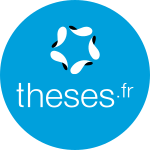Hybrid Legacies : the Dubois-Marcon Agency at the Defiance of the Mexican Modernity (Mexico City, 1921-1950)
Héritages hybrides : l’agence Dubois-Marcon à l’épreuve de la modernité mexicaine (Mexico, 1921-1950)
Résumé
In 1904, two architecture students at the l'École nationale et spéciale des Beaux-Arts of Paris, Paul Adolphe Dubois (1874-1953) and Fernand Marius Henri Marcon (1877-1962), joined the office of the Federal legislative Palace in Mexico City, to work on the great project that President Porfirio Díaz Mori entrusted to Émile Bénard (1844-1929). Simultaneously, the two architects started an independent collaboration (1907-1930) which led to the realization of many buildings and monuments in Mexico City during the First World War (1914-1918) and the Mexican Revolution (1910-1920). Some of their buildings remain today and are recognized as urban references. As well, Paul Dubois – the head of the agency – was named professor at the Academia de Bellas Artes de San Carlos (1913-1914 / 1919-1929), where he taught the architects who were responsible for national reconstruction.The analysis of these two architects trajectories, their built work in Mexico City and their relationship with post-revolutionary architects, in a context of distrust towards France, allow us to rethink with new acuity the quarrel over the frenchness in the networks of Mexican architectural and artistic modernity during the first twentieth century. Likewise, an intertextual reading of the Dubois-Marcon agency's production and the production of post-revolutionary Mexican architects opens the opportunity to better understand certain architectural hybridizations that took place in the post-revolutionary period, as well as their place in the heritage process.The period of our study was a privileged moment of architectural experimentation. Some of the constructions that survive to this day are interesting examples of how to combine the traditional and the universal approach in design; how to make an architecture representative of the current times, in harmony with the present, while maintaining a cultural anchor. Finally, with this research, we propose to make our contribution to the field of architectural and urban heritage of the early twentieth century in Mexico City, by highlighting certain effects of the circulation of ideas and architects between France and Mexico.
En 1904, deux étudiants en architecture à l'École nationale et spéciale des Beaux-Arts de Paris, Paul Adolphe Dubois (1874- 1953) et Fernand Marius Henri Marcon (1877-1962), rejoignent à Mexico l'agence du Palais Législatif fédéral, pour collaborer au grand chantier que le président Porfirio Díaz Mori a confié à Émile Bénard (1844-1929). Les deux architectes entament une collaboration (1907-1930) qui aboutit à la réalisation de nombreux bâtiments et monuments à Mexico, y compris pendant la Première Guerre mondiale (1914-1918) et la Révolution mexicaine (1910-1920). Certains bâtiments subsistent aujourd’hui et sont des références urbaines reconnues. Simultanément, Paul Dubois – à la tête de l’agence – a été nommé enseignant à l’Academia de Bellas Artes de San Carlos (1913-1914 / 1919-1929), où il a formé des architectes chargés de la reconstruction nationale.L'analyse du parcours des deux architectes, leur œuvre construite à Mexico et leur rapport avec les architectes postrévolutionnaires, dans un contexte de défiance vis-à-vis de la France, permettent de repenser avec une nouvelle acuité la querelle sur la francité dans les réseaux de la modernité architecturale et artistique mexicaine au cours du début du XXe siècle. De même, une lecture intertextuelle de la production de l'agence Dubois-Marcon et de la production d'architectes mexicains postrévolutionnaires, ouvre l’opportunité de mieux comprendre certaines hybridations architecturales qui ont eu lieu durant la période postrévolutionnaire, ainsi que leur place dans le processus de patrimonialisation.La période de notre étude a été un moment privilégié d’expérimentation architecturale. Certains des vestiges qui ont survécu jusqu'à aujourd'hui sont d'intéressants exemples d’une articulation entre tradition et universalité, d‘une architecture de son époque, en harmonie avec son temps, qui garde un ancrage culturel. Enfin, avec cette recherche, nous nous proposons d’apporter notre contribution au domaine du patrimoine architectural et urbain du début du XXe siècle à Mexico, en mettant en évidence certains effets de la circulation d’idées et d’architectes entre la France et le Mexique.
Fichier principal
 96891_PORRAZ_CASTILLO_2021_diffusion.pdf (106.86 Mo)
Télécharger le fichier
96891_PORRAZ_CASTILLO_2021_annexes.pdf (34.91 Mo)
Télécharger le fichier
96891_PORRAZ_CASTILLO_2021_diffusion.pdf (106.86 Mo)
Télécharger le fichier
96891_PORRAZ_CASTILLO_2021_annexes.pdf (34.91 Mo)
Télécharger le fichier
Origine : Version validée par le jury (STAR)
Format : Autre


